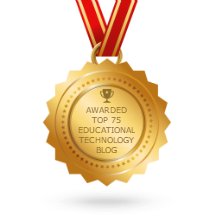Standard Highlight: Online Courses
Standard B: Content
B6: The online course content and supporting materials reflect a culturally diverse perspective that is free of bias |
|
|
| Short description:
Demographics and zip code should never be a barrier to equitable academic opportunities. I strive to create an inclusive curriculum through the online courses I help develop. My course development team supports our goal of Equity Everywhere by ensuring that lesson content is created with a firm foundation in diversity and inclusion. Content and examples should reflect and respect the students who are learning. Students reading these lessons shouldn’t feel alienated or excluded because of the examples we choose, the history we omit, or the names we include. When developing our updated eCourse Style Guide, choices were made deliberately to include a variety of cultures, genders, abilities, and socioeconomic statuses.
An inclusive and equitable curriculum provides benefits to all students including:
-
Greater empathy
-
Better understanding of lessons and people
-
Greater open-mindedness
-
Confidence and feeling of safety
-
Better preparation for the workplace
-
Improved cognitive skills and critical thinking
-
Creativity
When students feel represented by the curriculum, they are more likely to feel a sense of safety and belonging, which in turn provides a springboard for expression and achievement.
By Carly Fuller, Vice President, Customer Experience, Product Development, and Innovation for EdisonLearning
|
|
|
Helpful Hints for putting the standard into practice
-
Ensure that the images included in the curriculum show a diverse group of people.
-
Be mindful that some diversity is difficult to see. Diversity can also relate to socioeconomic status, nationality, gender expression, sexual orientation, disability, religion, or family composition.
-
Avoid assigning characteristics when possible, but when you must create specifics examples, vary them. Choose names from a variety of traditions. Create examples based on the variety of places our students live, not just the place you live.
-
Use a variety of pronouns in the curriculum, including the singular “they” as to not favor one gender over another.
-
Avoid stereotypes. Baking examples shouldn’t only include women. Doctors, sports stars, and engineers aren’t always men.
-
Use names and situations that vary by ethnic group and family composition.
-
Be considerate of differences in physical and cognitive abilities. Use “people-first” language when discussing disabilities.
-
Avoid using “you” whenever possible, especially when discussing movements or activities that not everyone may be able to do.
-
Include readings from a variety of ethnic groups and family compositions.
-
Avoid language that suggests a person “suffers” from a condition or disability. The term “suffer” confers a judgment on how the person living with a disability experiences it.
-
Unless necessary for educational value, avoid references to specific religious beliefs, figures, or holidays in examples.
-
Create examples that are accessible for all students. Be compassionate when discussing topics such as the unhoused (homeless), drug addiction, debt, hunger, and similar issues. For example, more than a million US students are unhoused; one in five are food insecure; 2 million have a parent with a substance abuse problem. We can’t know what struggles our students or their families face.
|
|
|
Here are a few resources which the Product Development team at EdisonLearning has found particularly helpful:
-
DEI in Curriculum: Model Principles and Practice – this chart lists traditional educational practices with corresponding equity principles and culturally responsive classroom practices.
-
Guidelines for Writing About People with Disabilities – this factsheet from the ADA National Network provides guidelines for portraying individuals with disabilities in a respectful and balanced way by using language that is accurate, neutral, and objective.
-
Use a name generator to ensure that names in the curriculum represent a variety of backgrounds.
-
This Inclusive Language Guide can assist with ensuring that you are using preferred terms when referring to marginalized groups, historically underrepresented groups, and underserved populations.
-
For guidance on the language of slavery, consult this resource from the National Park Service.
|
|
|
Author and Organization Bio
Carly Fuller currently serves as the Vice President, Customer Experience, Product Development, and Innovation for EdisonLearning. EdisonLearning merges best practices in instruction, developed over three decades of supporting schools, with innovative, expert-designed blended solutions to meet students where they are and deliver the education they need and deserve. An educator with over a decade of experience in digital learning, Carly has both taught virtual courses and led product development for EdisonLearning eCourses® and eSchoolwareTM online learning platform. She is a Quality Matters K12 Master Reviewer and serves on the Digital Learning Collaborative Executive Committee. She recently presented this topic as a poster session at the 2024 Digital Learning Annual Conference. You can contact her at Carly.Fuller@EdisonLearning.com.
Check out the NSQ Website and NSQ Professional Learning Portal for more resources.
|
|
|
|
|









 12 Unique Blogs Are Written By Professors
12 Unique Blogs Are Written By Professors
Leave a comment